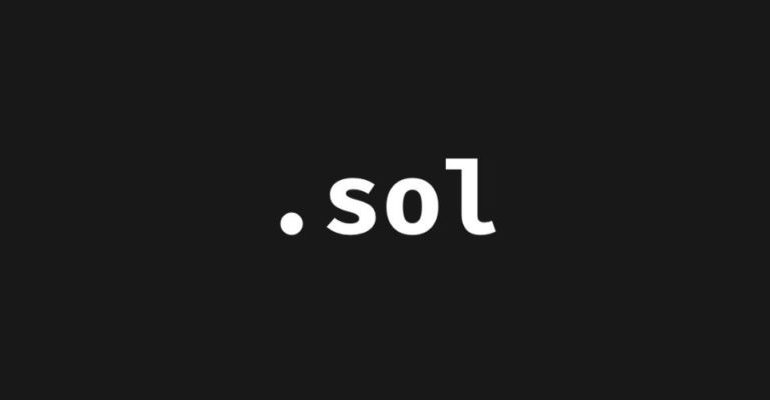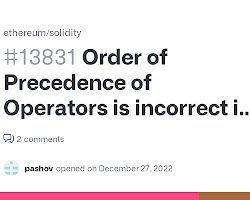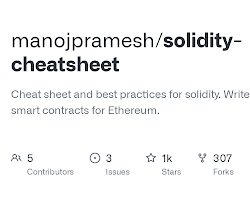The Ultimate Solidity Cheatsheet: Top 10 Things For Your Solidity Cheatsheet

Solidity is a high-level programming language that is specifically designed for developing smart contracts on the Ethereum blockchain. As with any programming language, mastering Solidity requires understanding its syntax, keywords, data types, and various other features. A Solidity cheatsheet can be a valuable resource for both beginners and experienced developers, as it provides quick and concise information about the language’s essential elements. Here are several reasons why having a Solidity cheatsheet is beneficial:
1. Quick Reference Guide: Solidity cheatsheets serve as a handy reference guide that developers can consult whenever they need a reminder or clarification about specific Solidity syntax or functionalities. They typically provide concise explanations and examples, saving time and effort compared to searching through documentation or online resources.
2. Language Syntax: Solidity has its own syntax and structure, which may differ from other programming languages. A cheatsheet provides an organized overview of the language’s syntax, including the placement of parentheses, brackets, semicolons, and other essential symbols. It helps developers write Solidity code correctly and avoids syntax errors.
3. Data Types and Variables: Solidity supports various data types, such as integers, booleans, strings, arrays, mappings, and structs. Each data type has its own characteristics and usage. A Solidity cheatsheet lists the available data types along with their size, range, and typical use cases. It helps developers choose the appropriate data type and use it effectively within their contracts.
4. Control Flow and Loops: Solidity cheatsheets often include information about control flow statements like if-else conditions, switch cases, and loops like for, while, and do-while. Understanding how to control the flow of execution and iterate over data structures is crucial for writing efficient and secure smart contracts. The cheatsheet provides examples and best practices for using these control flow structures effectively.
5. Solidity Functions and Modifiers: Functions are an integral part of Solidity contracts. They allow developers to define reusable blocks of code that can be called from other functions or contracts. Solidity cheatsheets provide information on defining and invoking functions, specifying function modifiers, handling return values, and managing function visibility and access modifiers. This knowledge ensures developers write modular and well-organized contracts.
6. Ethereum-specific Features: Solidity is designed for smart contract development on the Ethereum blockchain, which has its unique features and capabilities. Cheatsheets often cover Ethereum-specific concepts such as gas and gas costs, event logging, fallback functions, and interaction with other contracts using addresses and interfaces. Understanding these concepts is crucial for creating secure and interoperable contracts on Ethereum.
7. Security Considerations: Developing secure smart contracts is of utmost importance, as vulnerabilities in contracts can lead to significant financial losses or exploit opportunities. A Solidity cheatsheet typically includes best practices and security considerations, such as avoiding common pitfalls like reentrancy attacks, integer overflow, and underflow vulnerabilities, using proper access control mechanisms, and implementing error handling and exception mechanisms.
8. Common Libraries and Patterns: Solidity cheatsheets may also provide information about commonly used libraries, design patterns, and best practices for specific use cases. This can help developers leverage existing solutions and build on established patterns, saving time and effort in the development process.
In summary, a Solidity cheatsheet is a valuable resource for developers working with the Solidity programming language. It provides a concise reference guide, covering language syntax, data types, control flow, functions, Ethereum-specific features, security considerations, and common patterns. By having a cheatsheet on hand, developers can write more efficient, secure, and reliable smart contracts, while also saving time and effort during the development process.
Also read: Top 10 Programming-based Solidity Interview Questions
Top 10 things you can Find in a Solidity Cheatsheet
Solidity is a programming language for writing smart contracts on the Ethereum blockchain. It is a relatively new language, but it has quickly become popular due to its potential for creating decentralized applications (DApps).
If you are new to Solidity, or if you are just looking for a refresher, a Solidity cheatsheet can be a valuable resource. A cheatsheet typically includes a list of keywords, operators, and functions, as well as some basic syntax.
Here are 10 of the most useful finds you can find in a Solidity cheatsheet:
- Order of precedence of operators. This is a table that shows the order in which operators are evaluated in Solidity expressions.

- ABI encoding and decoding functions. These functions are used to encode and decode data in the ABI (Application Binary Interface) format.

- Members of bytes and string. These functions are used to access the members of bytes and string types.

- Members of address. These functions are used to access the members of address types.

- Block and transaction properties. These functions are used to access the properties of blocks and transactions.

- Validations and assertions. These functions are used to validate and assert the values of expressions.
- Mathematical and cryptographic functions. These functions are used to perform mathematical and cryptographic operations.

- Contract-related. These functions are used to create, deploy, and interact with contracts.

- Type information. These functions are used to get the type of an expression or variable.
- Function visibility specifiers. These specifiers are used to control the visibility of functions.
These are just a few of the most useful finds you can find in a Solidity cheatsheet. If you are serious about learning Solidity, I highly recommend getting a copy of a cheatsheet. It will be a valuable resource as you learn the language and start building your own DApps.
Anyone looking to learn #SOLIDITY?
SteakHut’s @0xWagyu_ is thinking of holding a live workshop to go over our solidity code👩💻
We could do this line by line and explain the importance/function as we go.
React if interested ❤️♻️💬#Avalanche #DeFi pic.twitter.com/3vlKTVN8Zw
— SteakHut🔺💙 (@steakhut_fi) June 8, 2022
Importance of Solidity Cheatsheet
A Solidity cheatsheet is an invaluable resource for developers working with the Solidity programming language. It serves as a quick reference guide that provides concise information about the language’s syntax, keywords, data types, control structures, and other essential elements. Here are several reasons why a Solidity cheatsheet is important:
1. Efficient Learning: Solidity cheatsheets are particularly useful for beginners who are new to Solidity. Instead of scouring lengthy documentation or searching for tutorials, a cheatsheet provides a consolidated overview of the language’s essential features. It helps developers grasp the fundamentals more efficiently by presenting the most relevant information in a concise format.
2. Quick Reference: As developers work on Solidity projects, they often encounter situations where they need to quickly recall syntax or usage details. A cheatsheet acts as a handy reference tool that provides immediate answers without the need to navigate through extensive documentation. It saves time and prevents interruptions in the coding workflow.
3. Syntax and Structure Guidance: Solidity has its own syntax and structure, which may differ from other programming languages. A cheatsheet lays out the language’s syntax rules, including the placement of brackets, parentheses, semicolons, and other symbols. It ensures that developers adhere to the correct syntax and helps them avoid common mistakes and errors.
4. Data Types and Variables: Solidity supports a range of data types, each with its own characteristics and use cases. A cheatsheet lists the available data types along with their sizes, ranges, and typical usage patterns. It assists developers in selecting the appropriate data type for their variables and ensures that they handle data correctly within their contracts.
5. Control Flow and Looping: Solidity cheatsheets cover control flow structures like if-else conditions, switch cases, and loop structures such as for, while, and do-while. Understanding how to control the flow of execution and iterate over data structures is crucial for writing efficient and secure smart contracts. The cheatsheet provides examples and best practices for using these structures effectively.
6. Function and Modifier Definitions: Solidity contracts rely heavily on functions and modifiers. Cheatsheets offer guidance on defining and invoking functions, specifying function modifiers, handling return values, and managing function visibility using access modifiers. By referencing the cheatsheet, developers can ensure that their functions are correctly structured and adhere to best practices.
7. Ethereum-Specific Features: Solidity is primarily used for smart contract development on the Ethereum blockchain. A Solidity cheatsheet often includes information on Ethereum-specific concepts such as gas costs, event logging, fallback functions, and interaction with other contracts using addresses and interfaces. This knowledge is essential for creating secure and interoperable contracts on Ethereum.
8. Security Considerations: Solidity cheatsheets typically provide best practices and security considerations for writing secure smart contracts. They outline common vulnerabilities and pitfalls such as reentrancy attacks, integer overflow/underflow, and improper access control. By following the guidelines in the cheatsheet, developers can reduce the risk of vulnerabilities and enhance the security of their contracts.
In summary, a Solidity cheatsheet is an essential tool for Solidity developers, regardless of their skill level. It provides a concise reference for syntax, data types, control flow, functions, Ethereum-specific features, and security considerations. By having a cheatsheet on hand, developers can write efficient, secure, and reliable smart contracts while saving time and effort in the development process.
Also read: Solidity Vs. Rust: Key Differences Every Programmer Should Know
Risks associated with solidity Cheatsheet
While Solidity cheatsheets are valuable resources for Solidity developers, it’s important to be aware of potential risks and limitations that may be associated with their use. Here are some considerations regarding the risks associated with Solidity cheatsheets:
1. Outdated Information: Solidity is an evolving language, and new versions are released periodically with updates, bug fixes, and new features. Cheatsheets may become outdated over time, especially if they are not regularly updated. Relying solely on an outdated cheatsheet can lead to incorrect or deprecated information, which may cause bugs or vulnerabilities in smart contract.
2. Lack of Context: Cheatsheets often provide concise explanations and examples, but they may lack the necessary context and comprehensive explanations. Solidity’s features and concepts can be complex, and a cheatsheet may not provide in-depth understanding or cover all possible scenarios. It’s important for developers to consult official documentation, guides, and other resources alongside the cheatsheet to gain a holistic understanding.
3. Incomplete Coverage: Due to space limitations, a cheatsheet may not cover all aspects of Solidity or may omit certain advanced topics. It is crucial for developers to recognize that a cheatsheet serves as a quick reference guide and may not provide a complete overview of Solidity’s capabilities. Developers should be cautious and not solely rely on a cheatsheet to learn or understand Solidity comprehensively.
4. Limited Explanation: Cheatsheets are designed to be concise, providing quick information for developers. However, this brevity can sometimes lead to inadequate explanations, especially for complex topics. It’s important for developers to seek additional resources when further clarification or deeper understanding is required.
5. Risk of Copy-Pasting: One potential risk of relying solely on a cheatsheet is the tendency to copy and paste code snippets without fully understanding their implications. This can lead to unintended consequences and introduce vulnerabilities into smart contracts. It’s crucial for developers to comprehend and review the code they are implementing rather than blindly copying from a cheatsheet.
6. Security Considerations: While some Solidity cheatsheets include security best practices, developers should be cautious when solely relying on them for security-related guidance. Security is a complex and evolving field, and following outdated or incomplete security guidelines from a cheatsheet may leave contracts vulnerable to attacks. Developers should regularly update their knowledge and consult official security resources alongside a cheatsheet.
To mitigate these risks, developers should approach Solidity cheatsheets as supplementary resources rather than sole references. It’s essential to combine them with official documentation, tutorials, community forums, and other reputable sources to ensure accurate and up-to-date information. Maintaining an active learning approach and staying informed about Solidity updates and best practices is crucial to mitigate risks associated with using cheatsheets effectively.
Future of Solidity Cheatsheet
The future of Solidity cheatsheets is likely to see continued development and evolution as the Solidity language itself evolves and matures. Here are some potential directions and improvements we may see in the future:
1. Updates for New Solidity Versions: Solidity is regularly updated with new features, bug fixes, and optimizations. Cheatsheets will need to be updated accordingly to reflect these changes and provide accurate information for developers. Future Solidity cheatsheets will likely be tailored to specific Solidity versions, ensuring compatibility and reflecting the latest language features.
2. Enhanced Coverage and Completeness: As Solidity matures and developers gain more experience with the language, cheatsheets may expand to cover additional topics, provide more comprehensive explanations, and include advanced concepts. This can help developers deepen their understanding and tackle complex scenarios effectively.
3. Interactive and Online Formats: Traditional cheatsheets are static documents, but future cheatsheets may leverage interactive and online formats. These formats can offer features like live code examples, interactive quizzes, search functionality, and dynamic updates to ensure that developers have the most up-to-date information at their fingertips. Interactive cheatsheets could provide an immersive learning experience that engages developers and enhances their understanding of Solidity.
4. Community Contributions: Solidity has a thriving developer community, and future cheatsheets may encourage community contributions. This can allow developers to share their knowledge, insights, and best practices with others. Open-source cheatsheets could be collaboratively developed and maintained, benefiting from the collective expertise of the Solidity community.
5. Integration with Development Tools: Cheatsheets may become integrated into popular Solidity development tools, such as integrated development environments (IDEs) and code editors. These integrations can provide developers with instant access to relevant information while they are writing code, helping them quickly find syntax examples, explanations, and best practices without leaving their development environment.
6. Visualizations and Diagrams: Solidity concepts can sometimes be complex, and visual representations can aid understanding. Future cheatsheets may incorporate visualizations, diagrams, and flowcharts to illustrate Solidity concepts and patterns more effectively. Visual aids can simplify complex concepts and make them more accessible to developers.
7. Extended Security Coverage: Given the increasing importance of secure smart contract development, future Solidity cheatsheets may provide even more extensive coverage of security considerations and best practices. They may highlight known vulnerabilities, provide code snippets for secure coding patterns, and offer guidance on conducting security audits and testing methodologies.
8. Integration with Learning Resources: Future Solidity cheatsheets may integrate with broader learning resources, such as tutorials, online courses, and documentation. This integration can provide a seamless learning experience, where developers can navigate from the cheatsheet to detailed explanations, examples, and exercises to reinforce their understanding.
In conclusion, the future of Solidity cheatsheets holds great potential for growth and improvement. By adapting to new Solidity versions, embracing interactive and online formats, leveraging community contributions, integrating with development tools, incorporating visualizations, enhancing security coverage, and integrating with broader learning resources, cheatsheets can continue to serve as valuable references and learning aids for Solidity developers.
Also read: Why do You need To Learn Solidity To Be Amazing At Smart Contracts?




























































